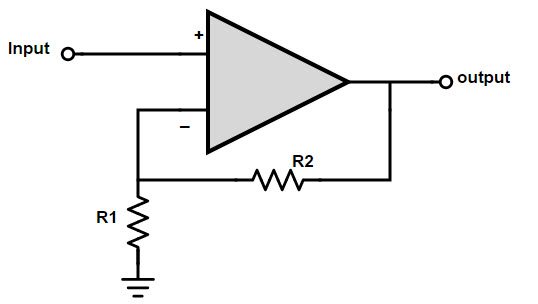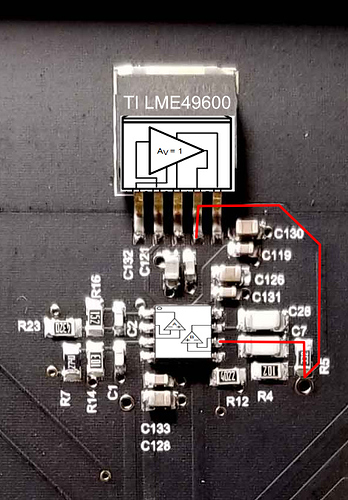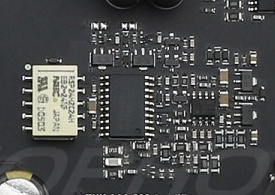I suspect it would be hard to get a $100 THX amp simply due to the licensing that needs to be paid per device using their IP. that said, as mentioned, there have been several inexpensive amps released lately that are so good they’ve been compared to THX…so if you’re okay with simulated or virtual THX, there you go!
i really dont understand why most people are always so focused on these ridiculous power outputs.
Yeah you really only need it for a select few headphones that most people will never own anyway, and also those select few like much more power than thx can offer anyway
Single ended and balanced can be equal in sound quality as long as they are both competent designs, I could really care less if something is balanced or not (for consumer HiFi) as long as it’s done well
In most cases the power concern is overblown, yes. There is one notable legitimate reason for it in the ~$100 amp category though: T50rp and mods. I don’t know exactly what Fostex was going for - other than a low-cost studio headphone. The T50 and its mods (Argons, Dekoni Blues, various Drop models) are fairly popular in afordable audio. They’re all <$500 and will most often be paired with <$500 amps. Power is a real concern here. As much as I love my Atom, it does not control my Dekoni Blues’s bass nearly as well as my SP200, as one example.
Yes, they do like power, but imo they sound just as good on a heresy as they do an sp200
Right. But that only further illustrates the point that where the T50 is concerned, power matters. The Heresy has more than double the power of the Atom.
Yes some headphones naturally like more power, the he560 is the same way where more power will typically improve the experience, to an extent
150$ Stock T50RPs here and I just cut the foams a bit, + 100$ Atom amp. ![]()
My V-shaped daily drivers.
The SMSL SP200 is close to 80€ in electronic parts, with assembly that pushes it beyond that mark. No idea what the case is, probably another 25€
Rest of the cost is retailers wanting to live and licensing.
Before you laugh
I went through some of the headphone amps that commonly get recommended on here and elsewhere. The markup on the overwhelming majority is unheared off in other industries!
Even a motherboard with an expensive VRM rarely crack the 250€ mark, and those are jam-packed with cutting edge electronics!
And “my [DAC/AMP/electronic thingy] is different” is not an excuse. “It sounds like 1200€” is not either → Apple also sounds like 1200€, is still ~340€ in parts, or 50€ in extruded aluminium…
Honestly, there’s a fuckton of research and development needed, too. And headphone amps are a niche of a niche. Motherboards? It’s the exact opposite. Shove one billion dollars in R&D, sell one billion motherboards in 12 months (no exaggeration) with a 10$ markup, get 10 billion$, use the billions for R&D for 10 other motherboards, etc etc…
Also, I feel like I already told you this, lol. Maybe. 
Further off-topic
For what? Motherboards with their 8 layer PCBs or headphone amps, which often are single layer to make manufacturing cheaper?
Margins on motherboards (and GPUs) are slim, which is why so many manufacturers branched into keyboards, chairs and other peripherals. None of the manufacturers except for the big ones that sell in china only throw huge sums into development of boards.
ASUS uses the same Vcore VRM on todays X570 and Z390 that they used in 2011, the rest is also copy pasted in place to keep cost of very expensive to make parts low.
Catering to a niche market does not warrant marking up the price. Specialised solutions warrant that, and as said, I have not seen any inovation in the circuit designs. It is just the parts from TI, AD and others getting better (and cheaper).
Also, THX amps are all like 6 watts per channel. As I just said in the other thread, give me a 100-150$ 1 watt AAA headphone amp!
You essentially already have one in the Atom, AFAIK. IIRC the Atom and Heresy and THX tech are all feed-forward topologies. The engineers on here can comment further, but my basic understanding of their respective designs is they all execute basically the same amp cicruit idea in slightly different ways.
Hmm, I don’t think so. @MazeFrame ? ![]()
Feed back - Circuit/Mechanism adjusts itself depending on load.
In other words: Feed back designs do not make assumptions about the load side, they are built to adjust themself to it.
Feed forward - Circuit/Mechanism reacts to the input in a predefined manner.
In other words: Feed forward circuits expect the load to be a certain way, loss of control signal or the load requires cut-offs/safeties.
The Schiit Heresy is feed forward. The Op-Amps in the output stage do not care for anything near them. They do what the input Op-Amp feeds them.
The JDS Labs Atom could be feed back. Black PCBs suck when you want to follow the traces… TI uses a feedback resistor in their reference circuit.
The SMSL SP200 THX Amp is another black PCB hides interesting bits. In the datasheet for the Op-Amps used, audio application is more of a side note. As with the Atom, TI has a feedback resistor in their reference circuit.
TL;DR
Schiit Heresey → Feed Forward
JDS Labs Atom → Most likely feedback.
SMSL SP200 → Impossible to say without taking a multimeter to it
Opamps are usually designed around around inverting feedback configurations. I wouldn’t call them feedback a the signal ratio between the input resistor and the feedback resistor is how one sets the application state. As long as the op amps used aren’t past their slew rate limit they just work. To reduce the need and worry about being slew rate limited, multiple gain stages are cascaded (hence how the Schiit Fulla 3 -> Hel -> Heresy scale up in power output).
The THX amps do something different but the op amp designs are literally virtually all the same minus manufacturing difference with the op amps and how well the matching can be done by the time they’re manufactured (it’s so small that quality components with op amps should not need matching).
Might be a language barrier, I do not understand what you try to tell me.
Negative feedback circuit in its simplest form:
This is the “typical application” for op-amps.
In the JDS Labs Atom, it looks like so:
Path from output of the TI LME49600 is red. At the Via, it R5 is negative feed back to the negative pin of the JRC NJM2068. No idea what the NJM2068 feeds without taking a multimeter to it.
In case of the SMSL SP200: No idea what is going on.
Would need this area as high-res as possible.
Excellent! Yeah, the non inverting feedback is what I was getting at and something I wouldn’t call “feed forward”. Generally, feed forward is used in FM transmitters and is a pain because they’re moderately unstable and have a frequency multiplier like function. That screen shot, perfect and showing exactly what I’m talking about and shows literally how simple op amp designs can be.
It is not feed forward, it is feed back ![]()
The controll circuits for feed forward (when done properly in discrete hardware) are rather complicated. And to be honest, I do not see any point in using them for audio.
FM gear is a beast I am not educated nor qualified to talk about.
To quote Texas Instruments:
Proper board layout is crucial to getting the maximum performance
As in: A bazillion capacitors and resistors in places where short traces should be is key to a good circuit. No Capacitors for marketing wank sake and so on. Everything should have rhyme and reason.


